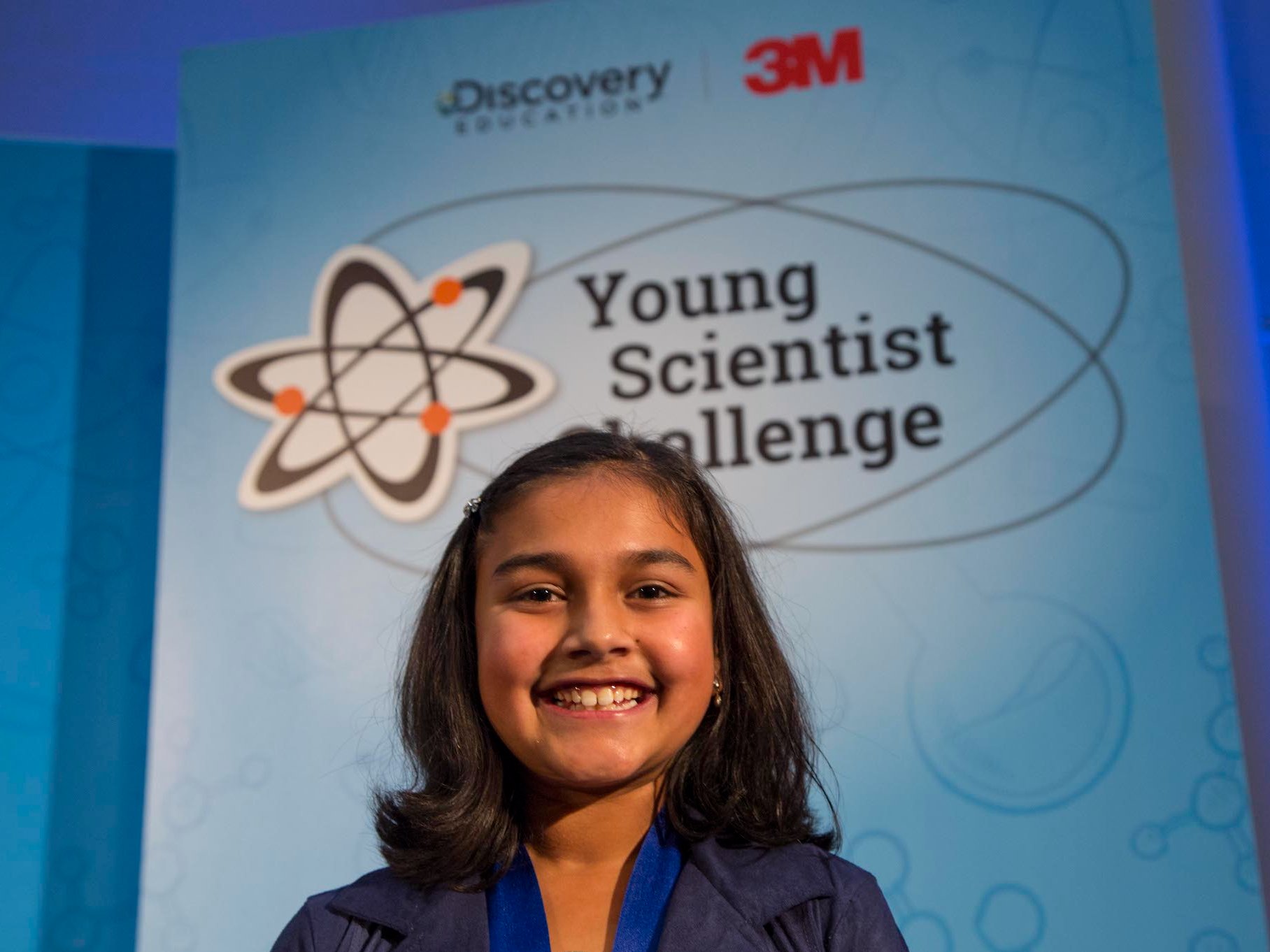
WASHINGTON (TIP): 3M and Discovery Education have named 11-year-old Indian American Gitanjali Rao from Lone Tree, Colo., the winner of the 2017 Discovery Education 3M Young Scientist Challenge. Gitanjali is working to develop Tethys, a sensor-based device that can detect lead in water faster than other current techniques.
Rather than using expensive equipment for testing, Gitanjali’s cost-effective approach to water safety uses a mobile app that populates the water’s status almost immediately. Tethys is designed to be portable and easy to use, allowing individuals to test water safety whenever needed. She hopes to solve the water contamination crisis and decrease long-term health effects from lead exposure.
A seventh-grader at STEM School and Academy, Gitanjali competed alongside nine other finalists during a live competition at the 3M Innovation Center in St. Paul, Minn. She was awarded the title of “America’s Top Young Scientist” as well as a $25,000 prize.
During the past three months, Gitanjali and the other finalists had the exclusive opportunity to work directly with a 3M scientist to develop their innovations as part of a unique summer mentorship program. Gitanjali was paired with Dr. Kathleen Shafer, a 3M research specialist who develops new plastics technologies that have real-world applications in dentistry and other fields.
Another Indian American student Rithvik Ganesh, an eighth-grader at C.M. Rice Middle School from Plano, Texas, received second place. Rithvik built upon existing research to conduct tests and identify one lead molecule from Apigenin, a compound found in fruits and vegetables, that could potentially be used to treat Alzheimer’s disease. Looking forward, Rithvik hopes to take his findings through in vitro and in vivo testing and improve thousands of lives affected by Alzheimer’s disease.
During the final competition, the finalists presented their inventions to an esteemed panel of 3M scientists, school superintendents and administrators from across the country. In addition to presenting their prototypes, the ten finalists paired up to compete in two additional challenges through which they combined multiple 3M technologies to solve real-world problems.
The remaining nine finalists received $1,000 and a variety of prizes from Discovery Education and 3M. The second, third and fourth runners-up also received a trip to a taping of a show on Discovery’s family of networks.





Be the first to comment